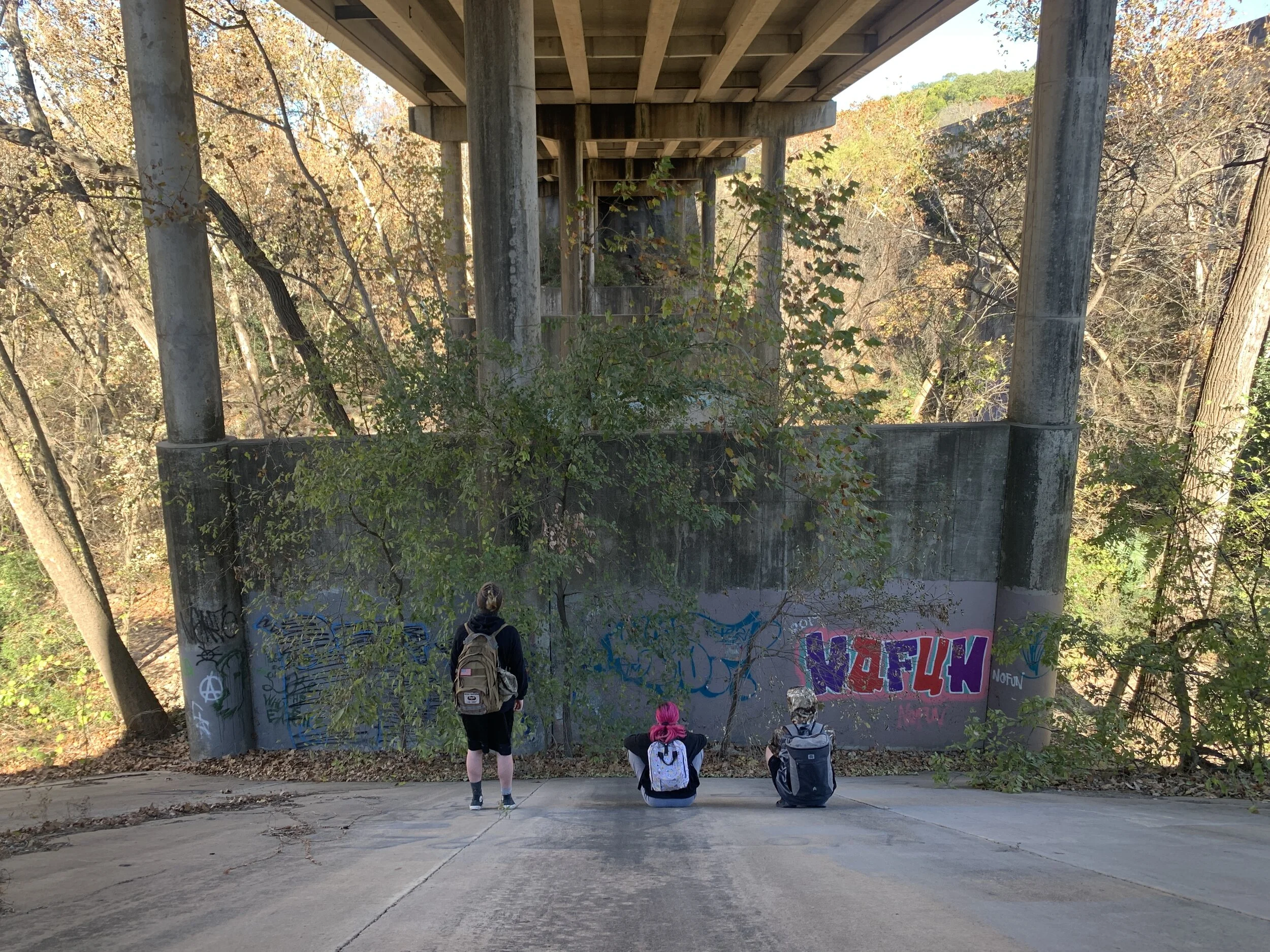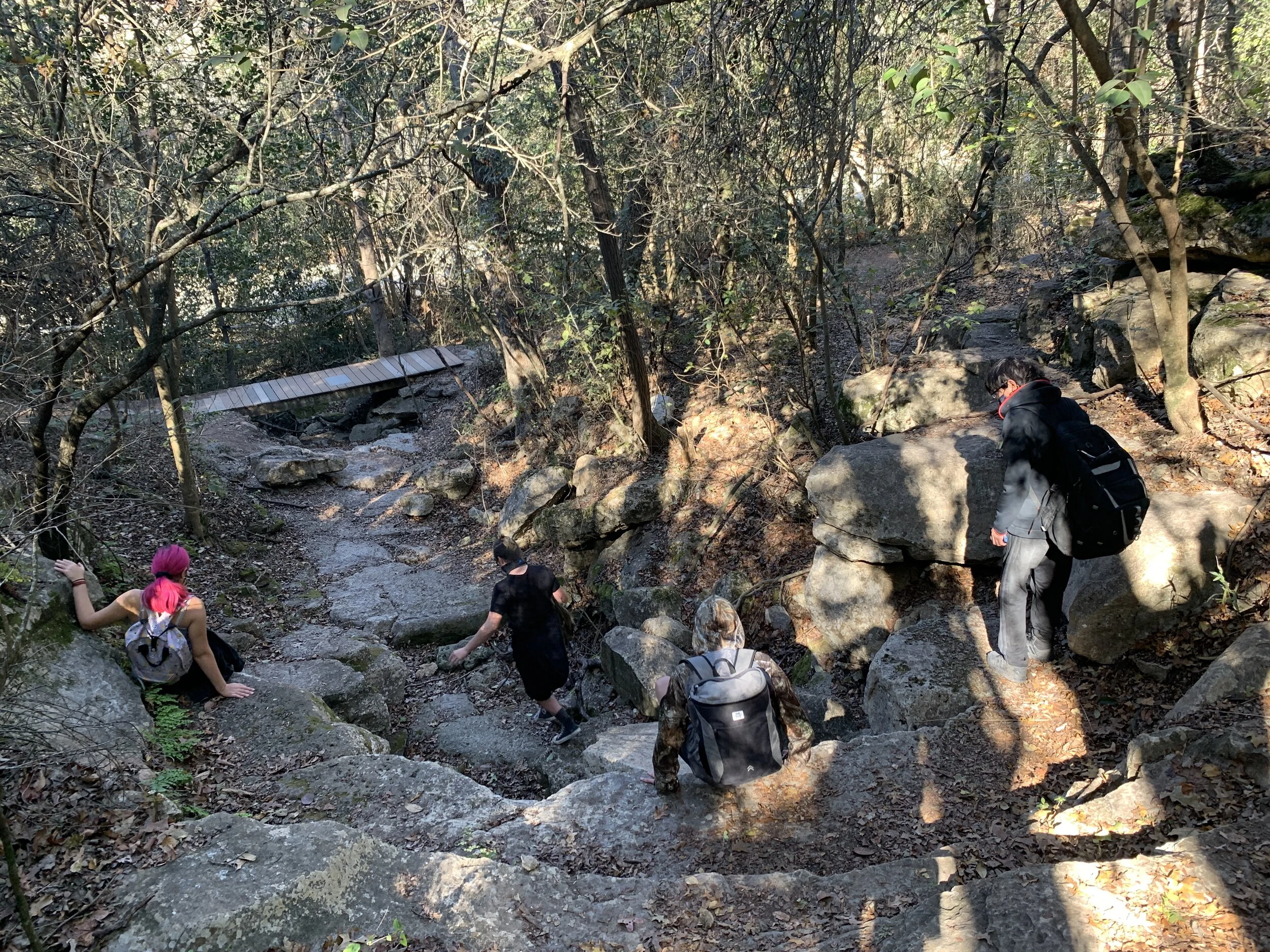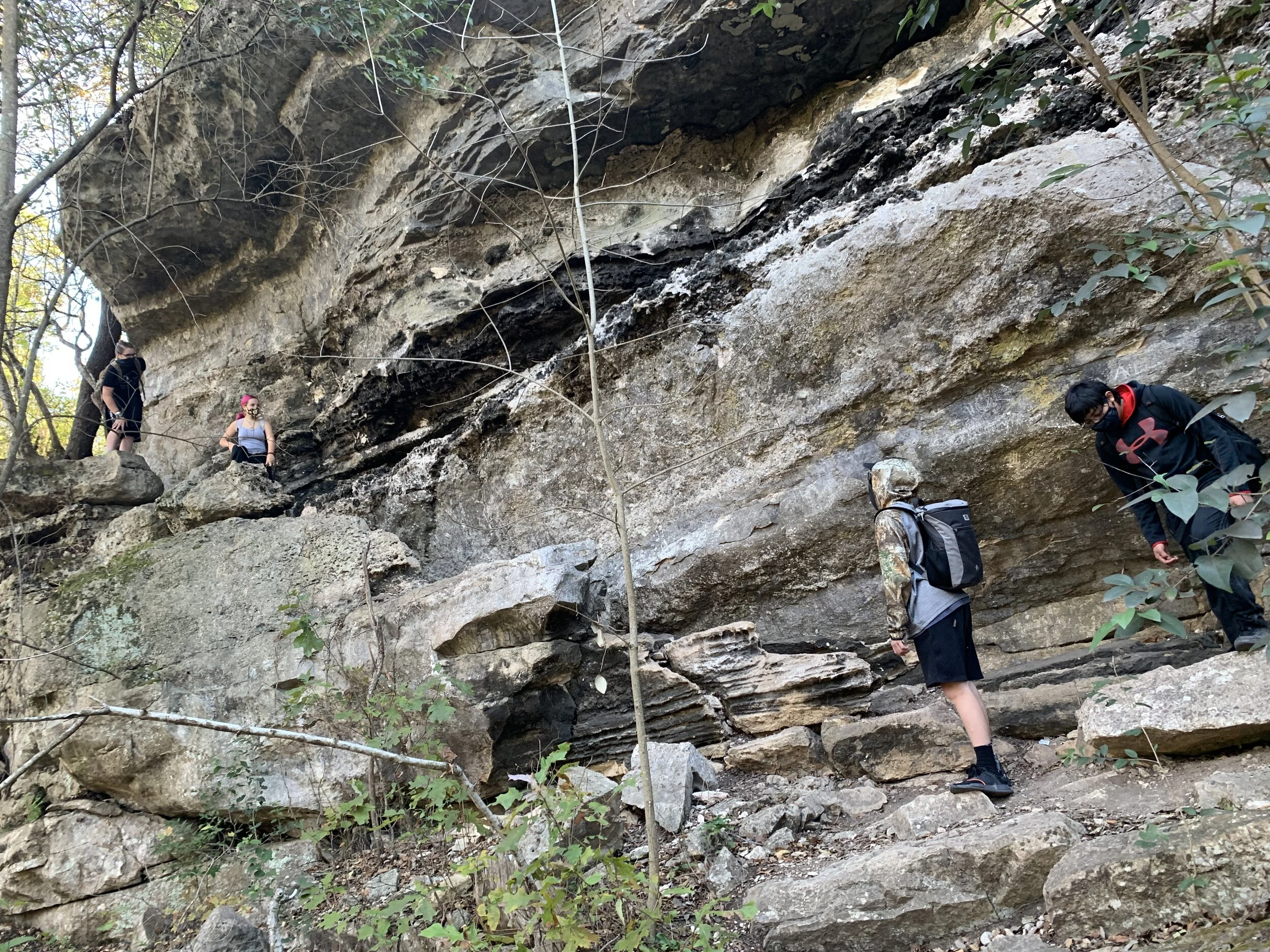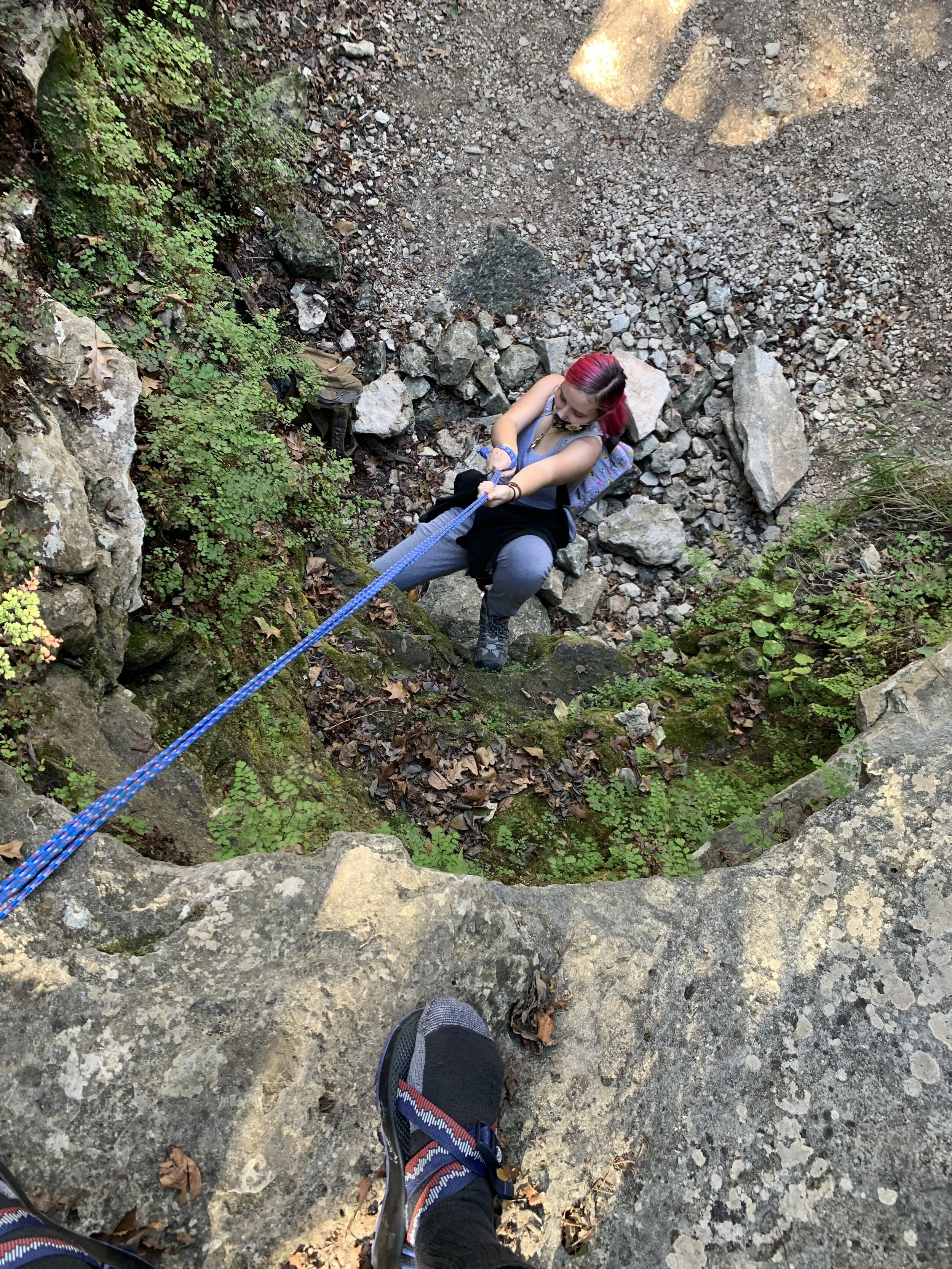I started my Monday morning frantically working to finish a blog post on why all schools should close their doors for the rest of the winter. I was hurried in the morning and ultimately was not able to get it finished. But I made great progress and I felt that I had prepared myself for a great day. Plus, I figured I would be able to squeeze in some time to finish it up in the middle of the day. At 9:30 a.m., Facilitators Ariel and Lauren called me to check in for the week. We had a quick ten minute call to talk about what we hoped to accomplish during the week and what we would each focus on. And then at 10:00 a.m, I jumped onto a zoom call for the morning meeting with the remote Learners.
Two of the Learners were missing for the morning call so the meeting was going to likely be a shorter one. I wanted to get the Learners to be thoughtful about their contributions during the meeting so before we jumped in at each stage of the meeting I asked for thirty seconds so people could collect their thoughts. The prompt for the morning meeting was, what is one thing or change that you think would make the world a better place? An absence of competition, more people playing Rogue Lineage, more people knowing what Bombus polaris is, and if people did not discriminate against certain groups of people. Maybe I should have requested 45 seconds?
We went over our intentions and then moved onto practices. We reviewed the four new practices that were established at the Check-in and Change-up on Friday: encourage discussion based offerings at the Set-the-Week meeting, host a Discord hangout each day, set an alarm to show up for afternoon roundup, and be mindful and present in the meetings. The first three shared their practices and then the last one said, “what, what are we doing, intentions?” I suggested that maybe he could focus on being mindful and present during meetings, and he laughed and said that he would focus on that one for the day.
Next we moved onto the Set-the-Week meeting and I shared that I would host two 7-minute workouts that week, in addition to our one-on-one checkins, a daily Free Write offering, and Discord hangouts. None of the Learners proposed their own offerings so we we adjourned the meeting and went on with our day.
Thinking about possibilities
The in-person cell was meeting at the climbing wall that morning. Most of the Learners said they wanted to do what others have done last week, with the younger Learners wanting to spend time at the wall and the older Learners wanting to spend time at the cave. Facilitator Ariel said he was interested in creating new experiences and challenges and wanted to go a different way. So he headed south with three Learners and the prospective Learner who was shadowing. During their hike the came across some graffiti on the underside of a large bridge, and discussed possible creative offerings. One of the Learners dismissed it as a possibility because that would not be taking care of the space. That led to a conversation of what it meant to take care of the space, and a discussion of possibilities.
At 11:00 a.m. I had a call with a college student from Illinois who wanted to learn more about Abrome and Self-Directed Education. The young person had joined the Education Conversations book group the prior Thursday, so we had already been introduced and we were able to jump right into a variety of questions. It was a nice conversation and it is clear that he had spent a lot of time thinking about the role of education in his life and in society. Toward the end he told me of some of the possible paths he was considering from dropping out to getting teaching experience through Teach for America. I encouraged more reading and discussion before making that choice, but I also discouraged teaching at a conventional school, whether or not it was through TFA. The reason being is because in order to teach in a conventional setting the teacher must take an oppositional position to the student. They have to force students to focus on the classwork, and in doing so they tend to develop negative views of students, and that can only be harmful in the long run.
Continuing to explore
Back at the in-person cell, three of the Learners were taking turns working with a hatchet that was brought by Facilitator Ariel. There was lots of conversation about safety considerations (such as not walking around with it unsheathed), and the hatchet work went on for quite some time. Three Learners got to explore some caves, while the two youngest Learners played a variety of imaginative games. Facilitator Lauren got to read her book, while the shadowing prospective Learner was nearby carving a downed branch. Facilitator Lauren asked him if it was soothing and he said it was.
There was a lot of encouragement between Learners this day
Finding new ways to overcome obstacles is a pretty standard Self-Directed Education thing to do
Earlier in the cycle there was conversation about the rope that Facilitator Ariel carries in his bag. Ariel explained that it serves as emergency rope, and that it is not climbing rope. They have had conversations about different ways that it could be used, and how it could be used safely. But on this day one of the Learners really thought that it could be really helpful to their attempts to scale some difficult terrain. They had a conversation about how we can sometimes use things in ways in which they were not intended, but also how it can lead a sometimes bad outcomes. One of the Learners proposed increasing the strength of the rope by braiding it or using multiple strands of it. Facilitator Ariel debated the risk of using the rope in the way that it was suggested, and instead of saying “no, you cannot do this” they discussed the possible consequences some more. Facilitator Ariel weighed the risks and decided that the proposed safety considerations would do, and let the Learner use the rope in the way that she proposed. It was an excellent exercise of creativity, risk management, and trust building.
The remote cell wrapped up our day with a very small meeting, as two Learners have appointments on Monday afternoons, and two others did not make the call. The remaining Learner offered to lead the meeting and asked two prompts: what are your intentions for tomorrow, and which park should we visit next time we are in-person? After we responded to both she added a third: would you rather go for a hike or go to a swimming pool with a diving board. She chose swimming pool, and I said hike. Although I did say I was flirting with the idea of jumping in the lake sometime this week when the weather is nice.
We adjourned the meeting and I checked in with two Learners who unexpectedly did not show. I was saddened to find that the reason one did not make it was because a close family member had just passed away. I followed up with each member of the family to let them know that I was available to support them however they needed it. Another huge disadvantage of being remote is that there is no near-term possibility for me just to be around the Learners (siblings) in a way that could facilitate an opportunity for them to process their emotions. I informed the other Facilitators so that we could plan to make ourselves available for the Learners and their family, and then shared some resources about supporting those in grief. It was a difficult way to end day 51.





